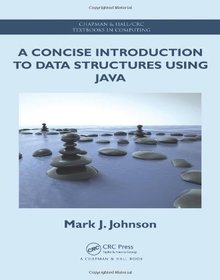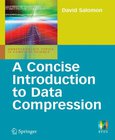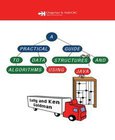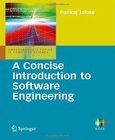A Concise Introduction to Data Structures using Java

Book Details:
| Publisher: | Chapman and Hall/CRC |
| Series: | CRC Press , Using |
| Author: | Mark J. Johnson |
| Edition: | 1 |
| ISBN-10: | 1466589892 |
| ISBN-13: | 9781466589896 |
| Pages: | 236 |
| Published: | Dec 19 2013 |
| Posted: | May 13 2017 |
| Language: | English |
| Book format: | |
| Book size: | 1.31 MB |
Book Description:
A student-friendly text, A Concise Introduction to Data Structures Using Java takes a developmental approach, starting with simpler concepts first and then building toward greater complexity. Important topics, such as linked lists, are introduced gradually and revisited with increasing depth. More code and guidance are provided at the beginning, allowing students time to adapt to Java while also beginning to learn data structures. As students develop fluency in Java, less code is provided and more algorithms are outlined in pseudocode. The text is designed to support a second course in computer science with an emphasis on elementary data structures. The clear, concise explanations encourage students to read and engage with the material, while partial implementations of most data structures give instructors the flexibility to develop some methods as examples and assign others as exercises. The book also supplies an introductory chapter on Java basics that allows students who are unfamiliar with Java to quickly get up to speed. The book helps students become familiar with how to use, design, implement, and analyze data structures, an important step on the path to becoming skilled software developers.
Download Link:
Related Books:
A Concise Introduction to Data Compression
This clearly written book offers readers a succinct foundation to the most important topics in the field of data compression. Part I presents the basic approaches to data compression and describes a few popular techniques and methods that are commonly used to compress data. The reader will discover essential concepts. Part II concentrates on advanced techniques, such as arithmetic coding, orthogonal transforms, subband transforms and Burrows-Wheeler transform. This book is the perfect reference for advanced undergraduates in computer science and requires a minimum of mathematics. An author-maintained website provides errata and auxiliary material....
A Practical Guide to Data Structures and Algorithms
Using Java
Although traditional texts present isolated algorithms and data structures, they do not provide a unifying structure and offer little guidance on how to appropriately select among them. Furthermore, these texts furnish little, if any, source code and leave many of the more difficult aspects of the implementation as exercises. A fresh alternative to conventional data structures and algorithms books, A Practical Guide to Data Structures and Algorithms using Java presents comprehensive coverage of fundamental data structures and algorithms in a unifying framework with full implementation details. Recognizing that software development is a top-down process, this applications-centered book provides careful guidance to students and practitioners. Complete ...
A Concise Introduction to Software Engineering
This book offers an easily accessible foundation to the topic of software engineering. It focuses on the essential elements, providing the reader with the basic skills and knowledge required to execute a software project successfully. Following the winning formula and easy-to read style of the authors previous An Integrated Approach to Software Engineering, this reader-friendly text is written especially for undergraduates as an introduction to this broad-ranging discipline. With a strong emphasis on practice, this textbook takes a case-study approach whereby a project is developed through the course of the book, illustrating the different activities of software development. The sequence of chapters is essentially the same as the sequence of activiti...
2007 - 2021 © eBooks-IT.org



